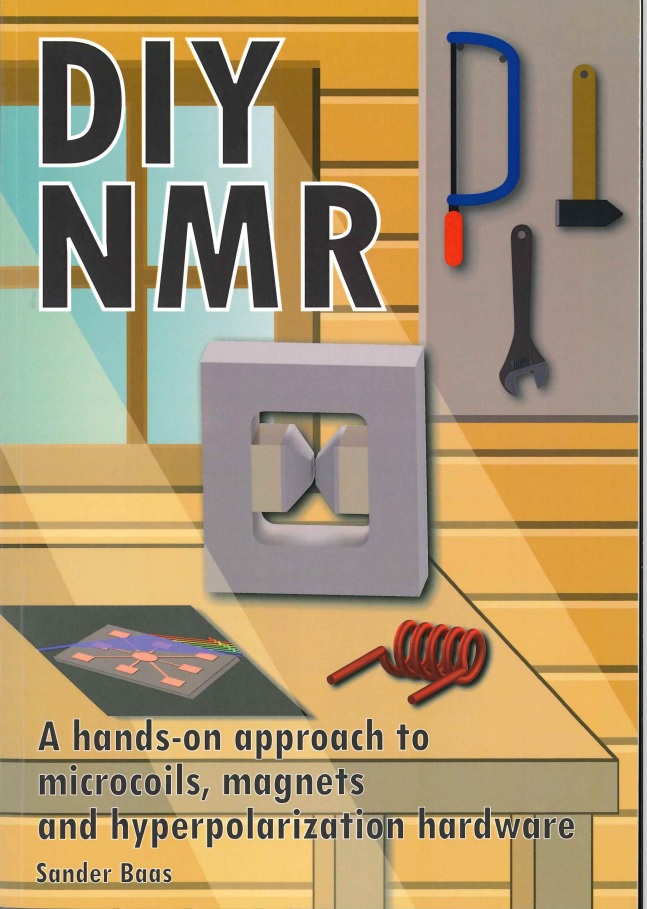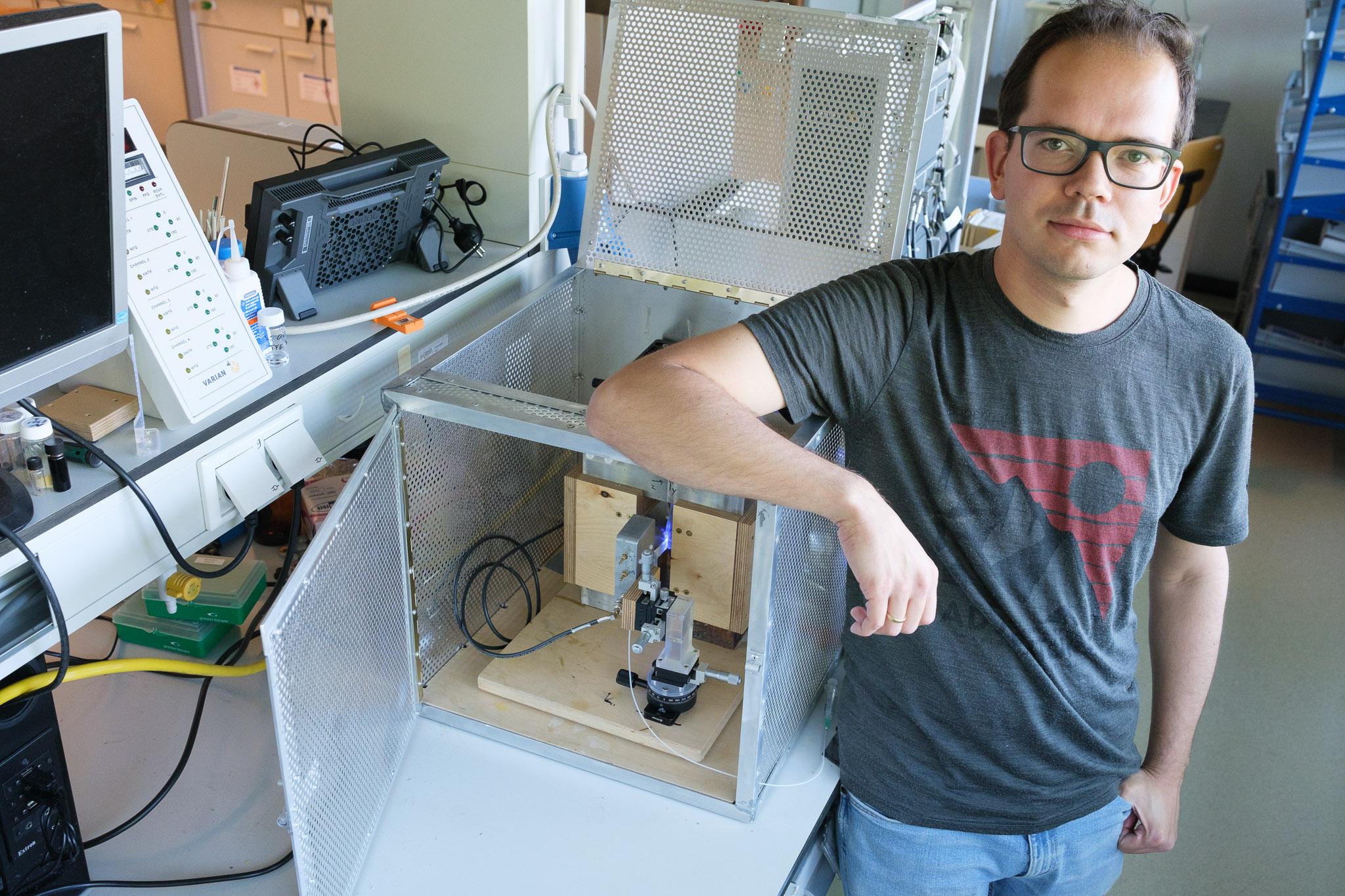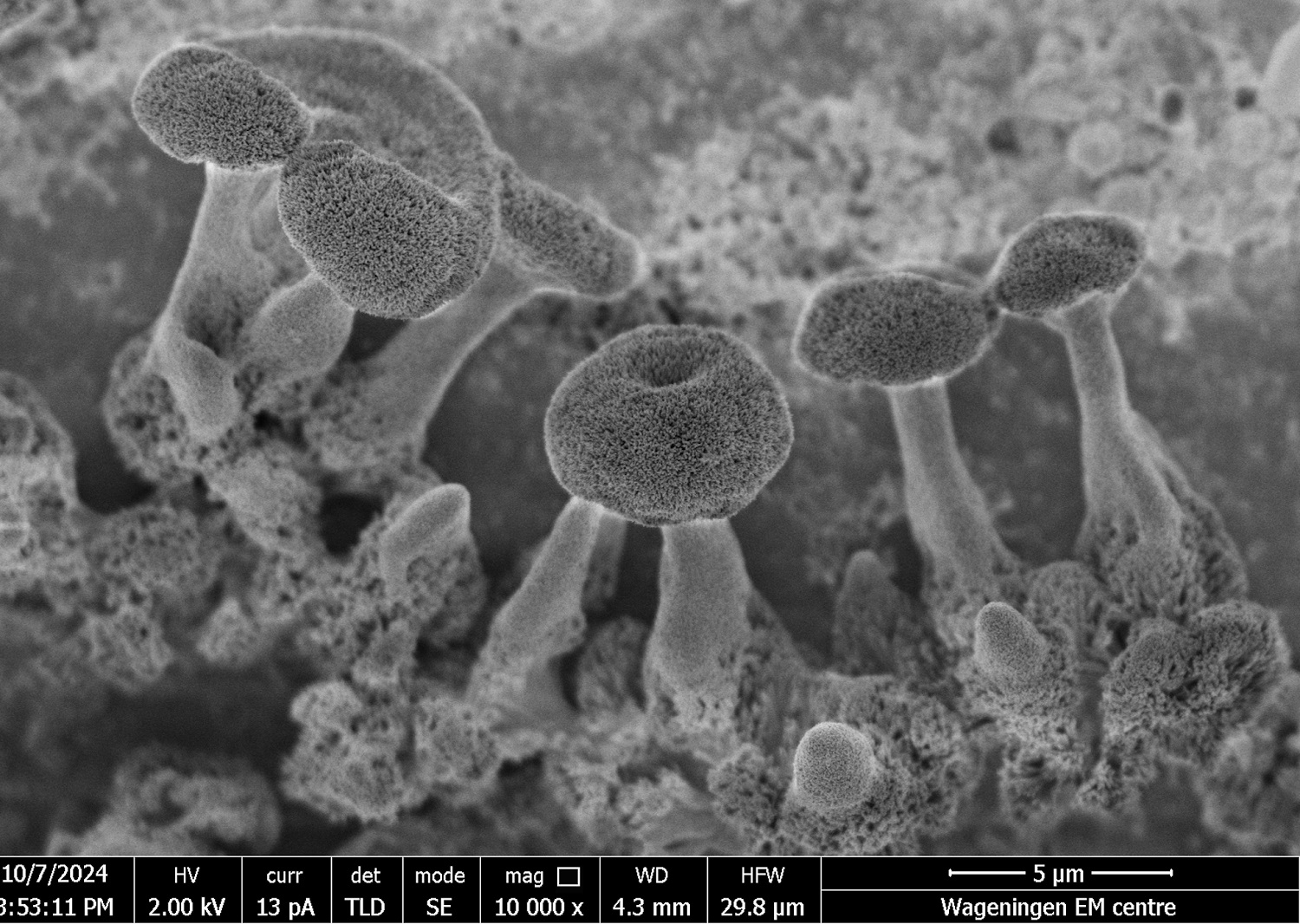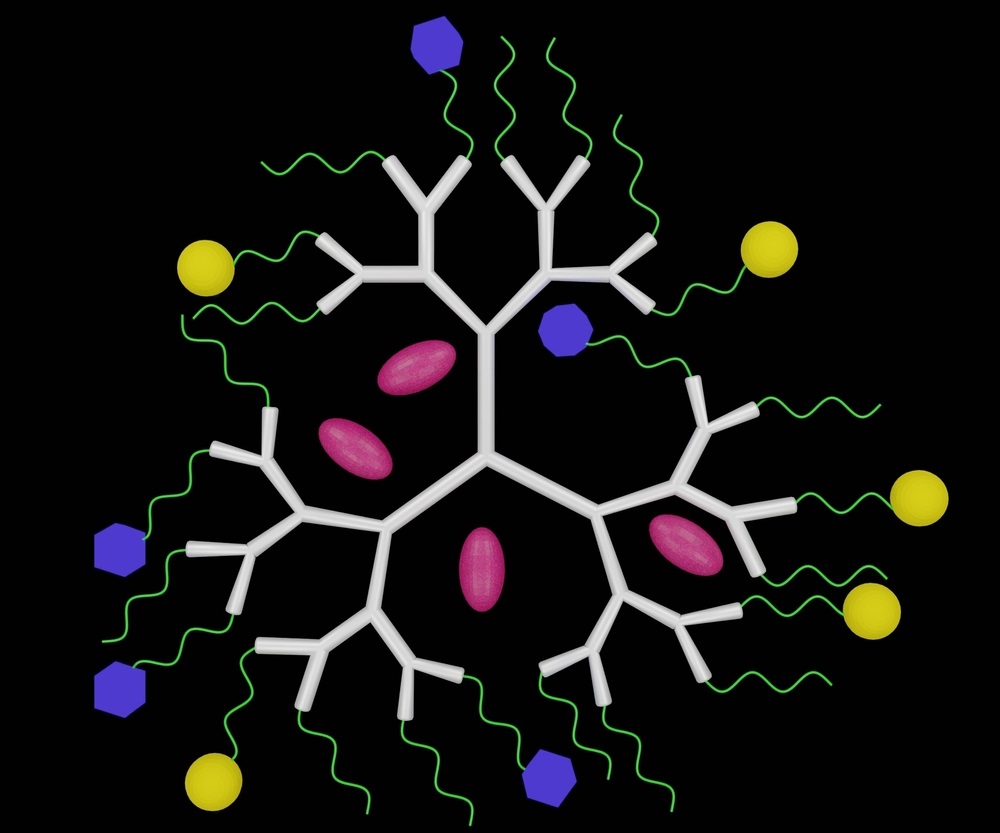NMR-spectroscopy means very little to the average person. MRI, however, is well-known. Both technologies are based on nuclear magnetic resonance. MRI scans reveal the inside of humans, and NMR unveils how a molecule is made up. Both technologies require machines that cost an arm and a leg. But Sander Baas shows that it can be done on a budget.
Million
Baas is to obtain his PhD on a dissertation bearing the title DIY NMR next week. And that is precisely what the dissertation does; it explains how everyday materials can be used to construct an NMR device. The prototype is made from between 1500 and 2000 euros in materials. By way of comparison, the “real” NMR in the lab costs one million euros. Baas: ‘and requires liquid helium to cool the magnet for several thousand of euros every few months.’
It is precisely that magnet that makes the average NMR machine so expensive. The nuclear magnetic resonance signal is obtained by placing substances in a magnetic field and then hitting them with a radio pulse. The signal that the substance bounces back provides information on the molecular structure of the material. The generally weak signal is amplified by the magnets. ‘A rather crude method’, Baas says. ‘It works, but it is very costly.’
A smaller spool increases the sensitivity
Sander Baas, BioNano Technology researcher
Baas takes a completely different approach. First, by reducing the size of the so-called probe, the spool with the sample which emits and receives the radio pulse. ‘Making the spool smaller increases the voltage of the pulse it emits (and, subsequently, receives) per unit volume. Hence, a smaller spool increases the sensitivity of detection.’
Homemade

A smaller spool requires less material. Baas: ‘When obtaining readings from a normal NMR, you use a tube with a 5 mm diameter and half a millilitre in volume. I use tubes with a diameter of 0.8-0.3 millimetres and a volume of 0.5 microlitres to 40 nanolitres. The difference is a factor of thousand to ten thousand.’ The spools Baas uses are barely visible to the naked eye.
Like almost everything about his NMR device, the spools are homemade. ‘No, this is not for clumsy people’, he admits. He worked on his own DIY skills during his studies in molecular sciences. He made small NMR probes as a part of his bachelor thesis in BioNano Technology, the department at which he is to obtain his PhD. He honed his skills during an internship in Leuven.
Colouring agent
In addition to making the probe smaller, Baas also boosted the NMR signal through so-called hyperpolarisation. In this process, a colouring agent is added to the sample. Striking light then puts the colouring into an ‘exited’ state that interacts with the sample. As a result, the NMR signal is intensified. ‘This is called hyperpolarisation. It allows you to boost the signal strength by as much as one thousand times.’
It would be great and instructional to have students build such a device from a kit
Sander Baas, BioNano Technology researcher
Miniaturisation and hyperpolarisation mean Baas’ apparatus does not require a strong magnet. The NMR is the size of a coffee machine. In the lab, the device is placed in a metal cage. Not to protect it from theft but from the interference of FM radio waves. Baas: ‘The radio pulse works at around 90 MHz, while FM radio broadcasts at between 87 and 108 MHz. Hence the Faraday’s cage.’
Through the lack of a catchier alternative, Baas names his device the LF NMR. LF stands for Low Field, because the machine does not require a strong magnetic field. It is not yet as sensitive as the expensive machines, but that issue is being addressed. ‘You don’t always need that level of sensitivity’, he states. ‘Certainly not for NMR practicals, for example. It would be great and instructional to have students build such a device from a kit.’
Market
As of yet, there are no plans to take the device to market. ‘It is all open science. To turn this into an actual product requires quite a bit of fine-tuning. And using the device requires some knowledge of NMR. It is not a question of just popping in the sample, pressing a button, and receiving a spectrum. This is intended to demonstrate the possibilities without a strong magnetic field.’

 Sander Baas next to his NMR apparatus. Photo Guy Ackermans
Sander Baas next to his NMR apparatus. Photo Guy Ackermans 

